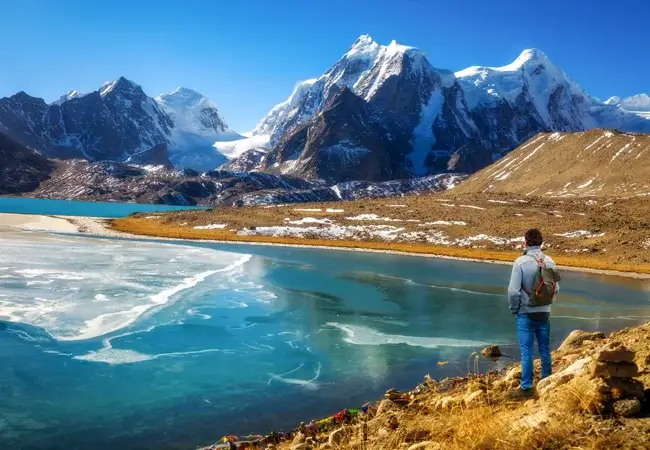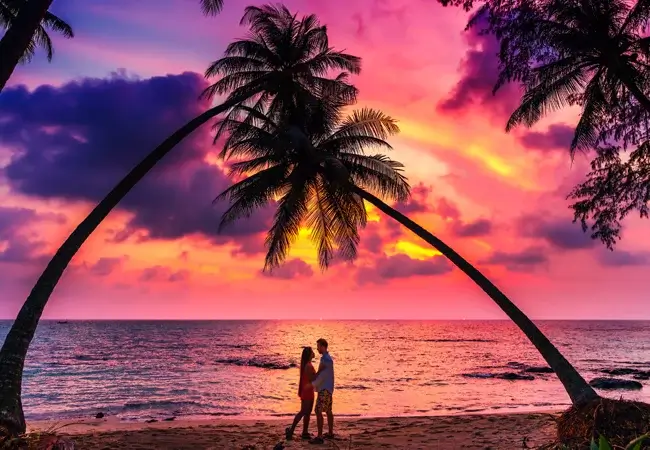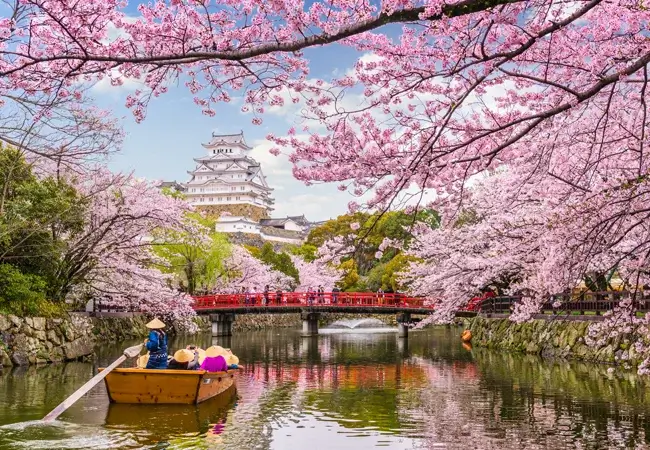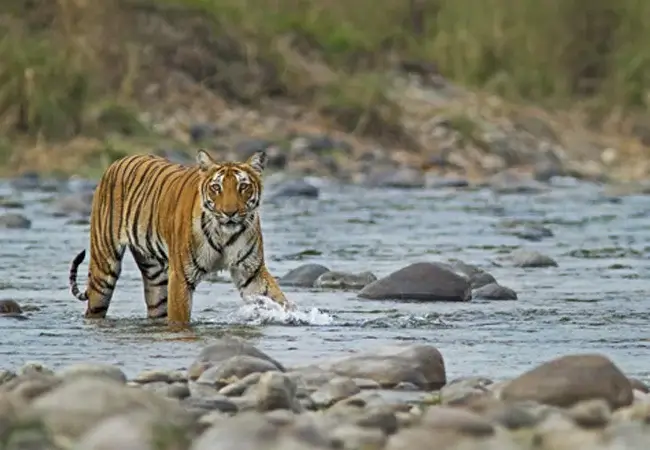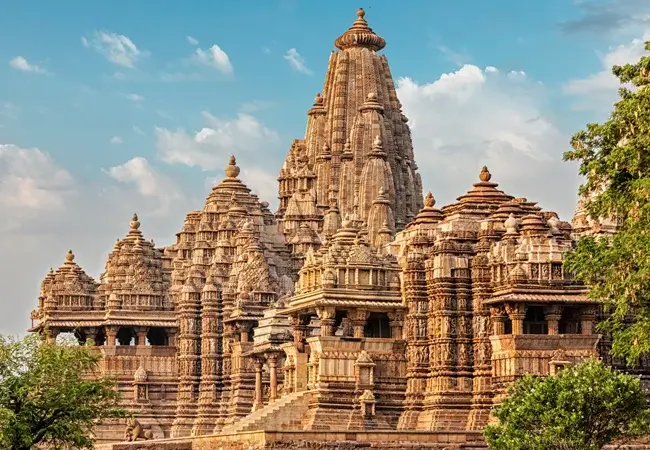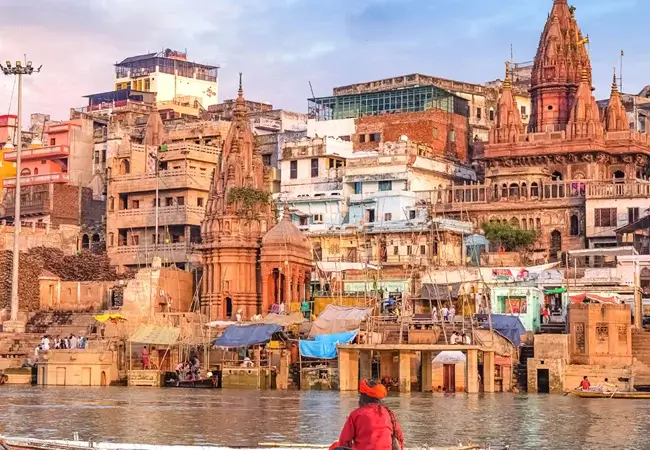Looking for a peaceful yet spiritual getaway? Book a Puri tour package with Safaar and explore one of India’s most sacred destinations. Home to the famous Jagannath Temple and serene beaches, Puri blends devotion, history, and beauty. Whether you're planning a family trip or a solo escape, our Puri tour and travels team ensures a smooth, well-guided experience packed with comfort and culture. Let us take care of your journey while you soak in the divine vibes of this coastal gem.
Planning your next spiritual escape? Puri is the perfect destination that combines faith, heritage, and serene coastal beauty. Home to the world-famous Jagannath Temple and the vibrant Rath Yatra, Puri is one of the four sacred Char Dham pilgrimage sites in India. Located just 60 km from Bhubaneswar, this holy city offers golden beaches, age-old traditions, and a rich cultural experience like no other. Whether you're a devotee, a culture enthusiast, or a beach lover — Puri tour packages promise a soulful and scenic journey.
Looking for a spiritually enriching getaway? Make the iconic Shree Jagannath Temple the highlight of your Puri tour package! Known as one of the most sacred pilgrimage sites in India and part of the Char Dham circuit, this 12th-century marvel invites you to experience unmatched devotion, architecture, and heritage.
From the majestic Rath Yatra (Chariot Festival) to the awe-inspiring wooden idols of Jagannath, Balabhadra, and Subhadra, every corner of this temple tells a story of faith and timeless tradition. Unlike any other shrine, the deities here are ceremoniously replaced every 12–19 years — a spiritual ritual you won't find anywhere else.
With Puri tour and travels, plan your visit hassle-free and be part of an unforgettable journey to one of India’s most divine destinations.

Step into the golden era of architecture with a visit to the majestic Sun Temple, Konark – just 35 km from Puri! Built in the 13th century by King Narasimhadeva I, this UNESCO World Heritage Site is one of India’s most iconic monuments, designed as a colossal stone chariot dedicated to Lord Surya (Sun God).
Though partially in ruins, the surviving structure — with its 100 ft high chariot, intricately carved wheels, and stone horses — still radiates divine artistry and power. From celestial deities to bold erotic carvings, every sculpture tells a story of ancient vision and craftsmanship.
Make your Puri-Konark tour package unforgettable with this awe-inspiring blend of spirituality, architecture, and mythology.

Just 3 km from the iconic Sun Temple, Chandrabhaga Beach offers the perfect blend of serenity and sustainability. This pristine beach is India’s first to earn the prestigious Blue Flag certification, marking it as a clean, eco-friendly destination with world-class amenities for travelers.
With its golden sands, clear waters, and peaceful surroundings, Chandrabhaga is a must-stop in every Puri-Konark tour package. Whether you're a nature lover, photographer, or simply seeking a tranquil escape, this beach promises unforgettable moments by the sea.

Planning a Puri tour package? Don’t miss the sacred Markandeshwar Temple, just 1 km from the famous Shree Jagannath Temple. This ancient Shiva temple, part of the Pancha Tirthas of Puri, holds deep spiritual and mythological significance.
At Safaar, we take you beyond the usual—walk the same path where Sage Markandeya once prayed and discover rituals tied to Puri’s biggest festivals like Chandan Yatra and Sital Sasthi. Whether you're seeking blessings or simply exploring divine heritage, Markandeshwar Temple offers a soulful experience.

Dreaming of a serene escape into nature? Chilika Lake, located on the eastern coast of India, is the largest brackish water lagoon in Asia and a paradise for nature lovers and bird watchers alike. It’s not just a lake—it’s a thriving ecosystem and India’s top wintering ground for migratory birds, hosting species from Russia, Mongolia, Central Asia, and even the Himalayas.
A haven for biodiversity, Chilika is home to endangered species listed on the IUCN Red List, making it a must-visit destination for wildlife tourism in Odisha. Rich in both ecology and culture, it’s deeply woven into the folklore of Odisha—like the tale of Lord Krishna dancing with the milkmaid Maniki on its shores.
Book your Chilika Lake tour with Safaar and witness flocks of flamingos, breathtaking sunsets, and the spiritual energy of a land that breathes history.

Add a cultural twist to your getaway with a visit to Raghurajpur Artist Village, just 10 km from Puri! Famous for its intricate Pattachitra art and traditional crafts, this heritage village is a must-see on any Puri tour package. Watch local artists at work, shop authentic souvenirs, and experience Odisha’s rich artistic legacy. Book now with our trusted Puri tour and travels services for a memorable cultural escape!
The presence of a golden beach in this city makes it much more attractive. It is one of the most well-known and recommended beaches in Odisha. The versatile beach is not just only a hub of water sports for the gutsy souls but also a great place for kids and millennial couples. Situated at the heart of the city of Puri, the beach is on the seaside of the Bay of Bengal in Odisha. It offers a myriad of fun activities for the visitors to enjoy and reminisce about them later. Not only this beach appeals to romantic couples and kids, but it is equally appealing to water sports fanatics and also proves to be a perfect beach for kids. Since the beach stretches over a long area, it can be an ideal choice for surfing enthusiasts. The warm and cold currents and the waves breaking over the sandbar give a breathtaking view to the surfers. If one is traveling with family, then trying out camel rides is a must.

The cuisine of Odisha is known to be very simple, and delicate yet mouth-watering and satisfies the taste buds to a great extent. Moreover, the dishes are always prepared with less oil or no oil which helps in the exposure of the flavor of the spices. Hence, the foods are also abdomen-friendly and healthy at the same time.
The temple cuisine is prepared using indigenously grown local cereals and vegetables, cooked in traditional methods using wood charcoal and earthen pots. The recipe is passed on from generation to generation. Though the food is simple, it tastes heavenly and compels tourists to crave more and more.
This is the offering made by the priests of the temple to the God Lord Jagannath. There is a unique process of cooking this mahaprasad. Earthen pots are kept on top of the other over the burner. Interestingly, the one at the top tends to cook first. According to mythology, Lord Vishnu meditates in Badrinath, gets dressed at Dwarka, has his lunch at Puri, and retires for the night at Rameswaram.
Here is a list of some of the most popular dishes that tourists cannot afford to miss while being in Puri:

It is mainly lentil cooked with an assortment of vegetables along with essential and healthy spices. Apart from serving rice, the people of Odisha also like to have this dish with a variety of dishes such as with local pancakes or fried lentil cake. This dish is filled with high protein and is considered to be the most essential component of any Odia meal

This dish is prepared using rice fermented overnight with water and consumed with an accompaniment of fried vegetables and fish. It is mainly consumed during the summer season to keep the body cool because it has the properties to prevent heat stroke.
This dish is mainly prepared on special occasions in an Odia household and has many variants such as Chakuli Pitha, Manda, and many more. Some of the sweet dishes of Odisha are:
- Rasagulla
- Chennapoda
- Chenna Jhili
- Karakhai
Planning a trip to Puri? The ideal time to visit is between June and March, when the weather is pleasant and perfect for sightseeing. Avoid the peak summer months (March to June), as the heat can make travel uncomfortable. Book your Puri tour package during the cooler months for the best experience. Our Puri tour and travels services ensure a smooth and enjoyable journey through this spiritual and cultural hub of Odisha.






